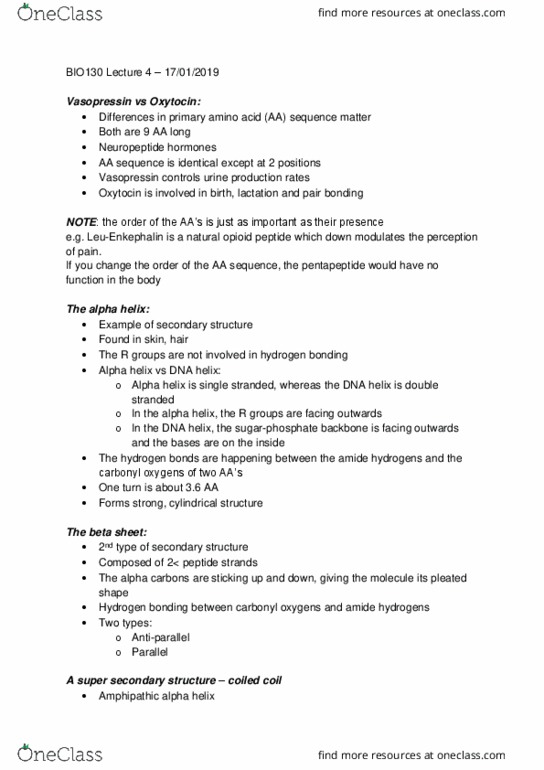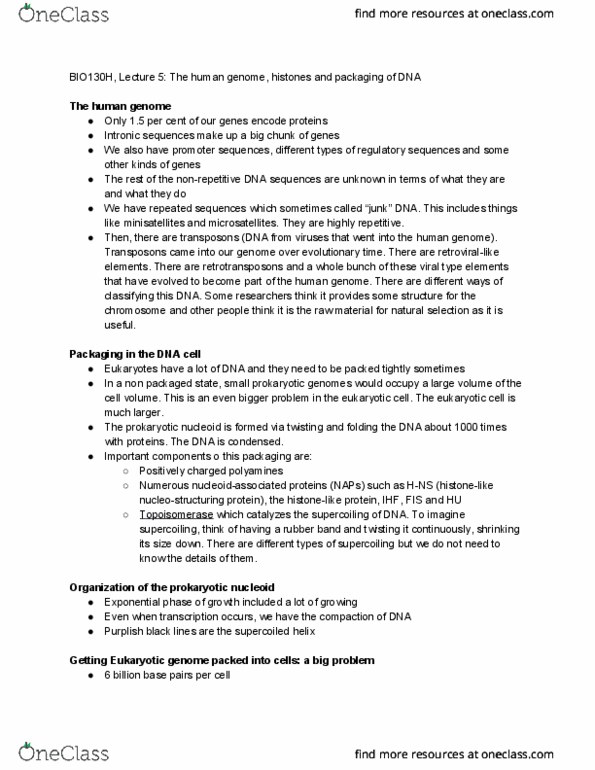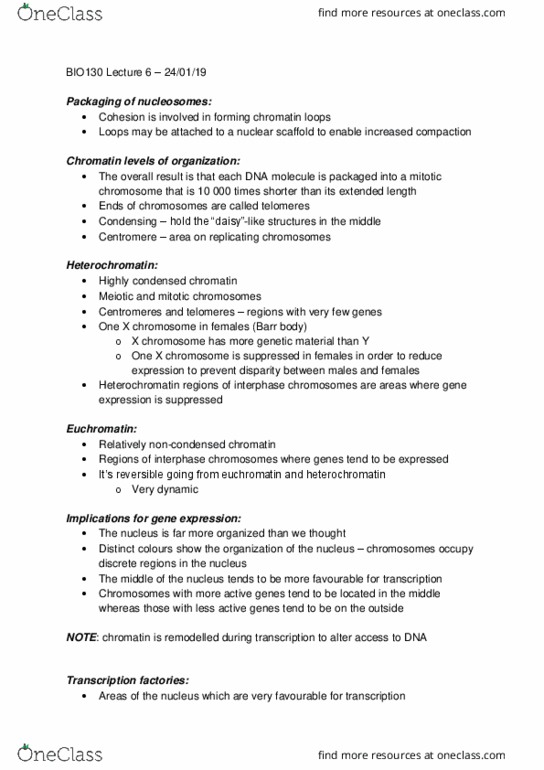BIO130H1 Lecture 5: The human genome, histones and packaging of DNA
BIO130H1 verified notes
5/26View all

BIO130H, Lecture 5: The human genome, histones and packaging of DNA
The human genome
● Only 1.5 per cent of our genes encode proteins
● Intronic sequences make up a big chunk of genes
● We also have promoter sequences, different types of regulatory sequences and some
other kinds of genes
● The rest of the non-repetitive DNA sequences are unknown in terms of what they are
and what they do
● We have repeated sequences which sometimes called “junk” DNA. This includes things
like minisatellites and microsatellites. They are highly repetitive.
● Then, there are transposons (DNA from viruses that went into the human genome).
Transposons came into our genome over evolutionary time. There are retroviral-like
elements. There are retrotransposons and a whole bunch of these viral type elements
that have evolved to become part of the human genome. There are different ways of
classifying this DNA. Some researchers think it provides some structure for the
chromosome and other people think it is the raw material for natural selection as it is
useful.
Packaging in the DNA cell
● Eukaryotes have a lot of DNA and they need to be packed tightly sometimes
● In a non packaged state, small prokaryotic genomes would occupy a large volume of the
cell volume. This is an even bigger problem in the eukaryotic cell. The eukaryotic cell is
much larger.
● The prokaryotic nucleoid is formed via twisting and folding the DNA about 1000 times
with proteins. The DNA is condensed.
● Important components o this packaging are:
○ Positively charged polyamines
○ Numerous nucleoid-associated proteins (NAPs) such as H-NS (histone-like
nucleo-structuring protein), the histone-like protein, IHF, FIS and HU
○ Topoisomerase which catalyzes the supercoiling of DNA. To imagine
supercoiling, think of having a rubber band and twisting it continuously, shrinking
its size down. There are different types of supercoiling but we do not need to
know the details of them.
Organization of the prokaryotic nucleoid
● Exponential phase of growth included a lot of growing
● Even when transcription occurs, we have the compaction of DNA
● Purplish black lines are the supercoiled helix
Getting Eukaryotic genome packed into cells: a big problem
● 6 billion base pairs per cell
Document Summary
Bio130h, lecture 5: the human genome, histones and packaging of dna. Only 1. 5 per cent of our genes encode proteins. Intronic sequences make up a big chunk of genes. We also have promoter sequences, different types of regulatory sequences and some other kinds of genes. The rest of the non-repetitive dna sequences are unknown in terms of what they are and what they do. We have repeated sequences which sometimes called junk dna. Then, there are transposons (dna from viruses that went into the human genome). Transposons came into our genome over evolutionary time. There are retrotransposons and a whole bunch of these viral type elements that have evolved to become part of the human genome. There are different ways of classifying this dna. Some researchers think it provides some structure for the chromosome and other people think it is the raw material for natural selection as it is useful.







